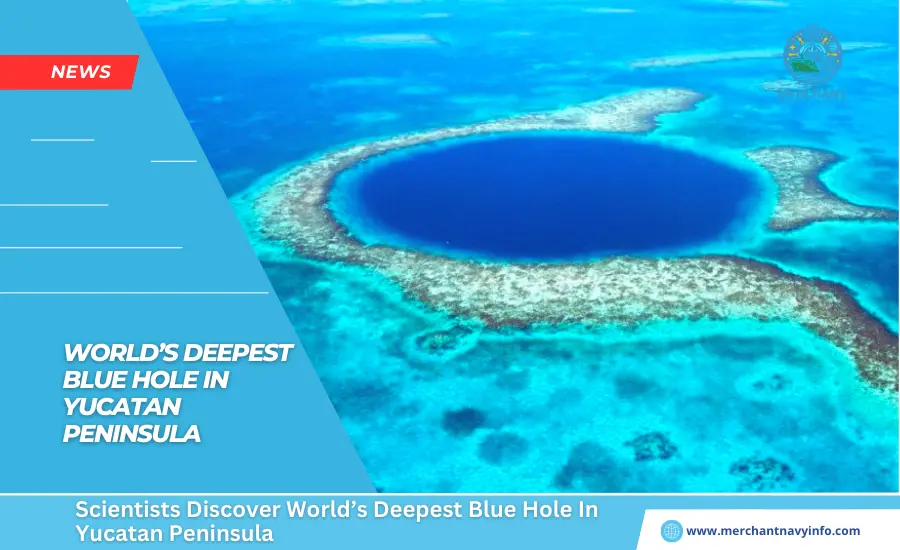
Scientists have found the world’s deepest discovered blue hole in a remarkable discovery in yucatan peninsula map.
The Team Ja’ Blue Hole (TJBH), is situated just outside the Yucatan Peninsula in Mexico and Belize. This has been a magnet for explorers with its huge dimensions and mysteries buried within its depths.
As per a new study published in Frontiers in Marine Science. The TJBH goes for at least 1,380 feet (420 m) below sea level, roughly the height of Chicago’s Trump Tower.
The discovery smashes the previous record set by the Sansha Yongle Blue Hole in the South China Sea. That one was 990 feet to the bottom.
Blue holes, vertical marine caves which were created thousands of years ago by glacial runoff at the time of the Ice Age. It gives a unique and intriguing setting for proper investigation.
Blue Holes are a Scientific Wonder
These huge sinkholes, which can be hundreds of feet deep and as wide as they are long. They have captured the interest of marine biologists for years because of the biodiversity they may contain. Also, the insights they store about Earth’s geological history.
However, moving around these undersea treasures poses substantial hurdles.
Without the proper equipment and training, diving can be dangerous because of an absence of oxygen. Also, the presence of hydrogen and sulfide gas.
Scientists are anxious to discover the secrets deep within the TJBH despite the risks.
The TJBH was first measured in 2021 and found to be 900 feet deep. However, technological developments in the last few years have made more precise measurements possible.
Researchers used a conductivity, temperature, and depth (CTD) profiler to collect detailed data on the blue hole’s dimensions and features.
During a December scuba diving expedition, scientists used the CTD profiler to record water data in real time.
Machinery to explore Blue Hole in Yucatan peninsula
While the gadget can reach depths of 1640 feet, it was halted at 1380 feet, possibly due to underwater currents or geological formations.
Although researchers have not reached the bottom, they believe the TJBH may be essential to understanding the interconnecting cave networks and unidentified species.
The subsurface formation may provide vital information about biodiversity and geological processes, with consequences that extend beyond Earth’s oceans.
The hydrographic data obtained at the TJBH provided interesting insights into water temperature, salinity, and density gradients.
A comparison with other bodies of water, such as the Caribbean Sea and Mexican Caribbean reef lagoons, shows possible subterranean links, implying a complex and interconnected network beneath the ocean’s surface.
As scientists continue to solve the mysteries of the TJBH, more research and technological improvements will be required to discover the secrets hidden within the world’s deepest known blue hole.










